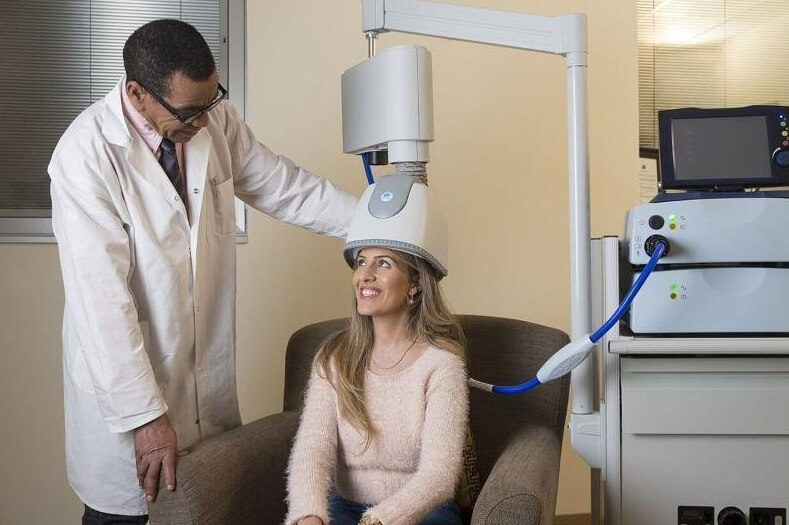Comorbid anxiety symptom severity was reduced with repetitive transcranial magnetic stimulation (rTMS), according to a study published in Depression and Anxiety. The data was from the randomized noninferiority THREE-D study that compared intermittent theta-burst stimulation (iTBS) and high-frequency (10 Hz) rTMS delivered to the left dorsolateral prefrontal cortex (HFL).
In the THREE-D study, an analytic cohort of 388 adult outpatients aged 18 to 65 years naïve to rTMS treatment who had been diagnosed with major depressive disorder (MDD) and who had failed 1-3 adequate antidepressant trials or had not tolerated at least 2 separate trials of antidepressants were randomly assigned treatment with iTBS (199 participants, 63.8% with anxious depression) or HFL (189 participants, 63.5% with anxious depression).
In the respective groups, HFL treatments were delivered at 120% resting motor threshold (RMT) (4 s on, 26 s off (3000 pulses/session over 37.5 min), and iTBS was delivered in triplet 50‐Hz bursts repeated at 5 Hz, 2 s on, 8 s off (600 pulses per session over 3 min) to the left DLPFC 5 days per week for 4 to 6 weeks.
After the first 20 treatments, participants who achieved at least 30% reduction in the 17‐item Hamilton Depression Rating Scale (HAM‐D) score, but not remission, received an additional 10 treatments over 2 weeks. Patients were withdrawn from the study if their HAM-D score worsened more than 25% in 2 consecutive assessments (as well as 4 consecutive treatments missed) or if they developed significant suicidal ideation.
From baseline to the end of the rTMS course at week 4 or 6, the combined score from the anxiety/somatization items from the HAM‐D dropped from 7.42 (standard deviation (SD) = 2.15) to 4.57 (SD = 2.68) in the HFL group, and 7.33 (SD = 2.13) to 4.51 (SD = 2.60) in the iTBS group. Maximum improvement in depression and anxiety occurred at week 5, with a similar effect size of time for both models (η2 of 0.159 and 0.237, respectively).
In the Brief Symptom Inventory (BSI‐A), scores dropped from 10.36 (SD = 5.2) to 7.0 (5.5) in the HFL group (mean change = −3.5 ± 5.4) and from 9.6 (SD = 5.3) to 6.1 (4.8) in the iTBS group (mean change = −3.2 ± 4.8).
A comorbid diagnosis of generalized anxiety disorder (GAD), panic disorder, and/or social anxiety had a significant negative effect for the odds of achieving remission (odds ratio (OR) = 0.63; 95% (CI), 0.40–0.98; P =.039).
Limitations of the study included the wide variability in concomitant antidepressant and benzodiazepine use during the trial and the lack of sham control.
Disclosure: Some study authors declared industry affiliations. Please see the original reference for a full list of authors’ disclosures.
Reference
Trevizol AP, Downar J, Vila-Rodriguez F, Konstantinou G, Daskalakis ZJ, Blumberger DN. Effect of repetitive transcranial magnetic stimulation on anxiety symptoms in patients with major depression: An analysis from the THREE‐D trial. Depress Anxiety. Published online December 11, 2020. doi.org:10.1002/da.23125
